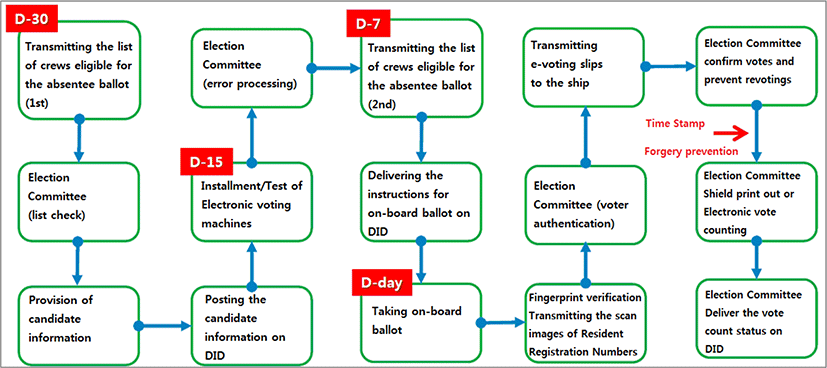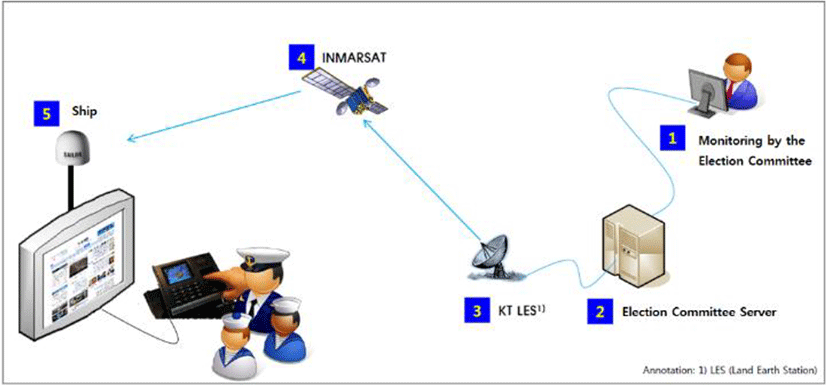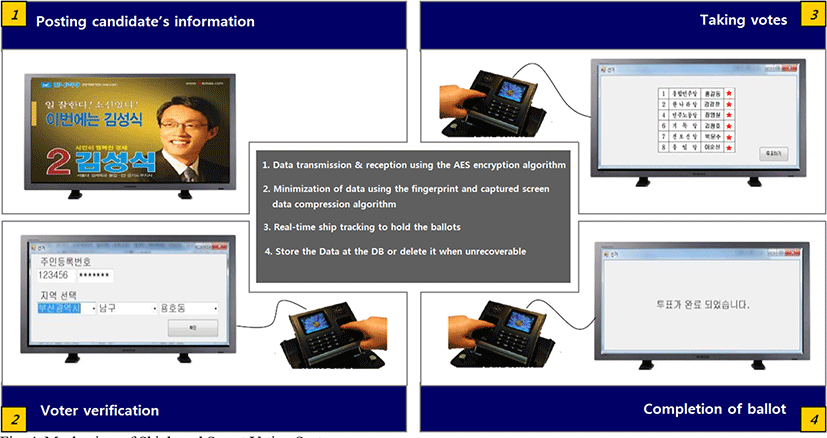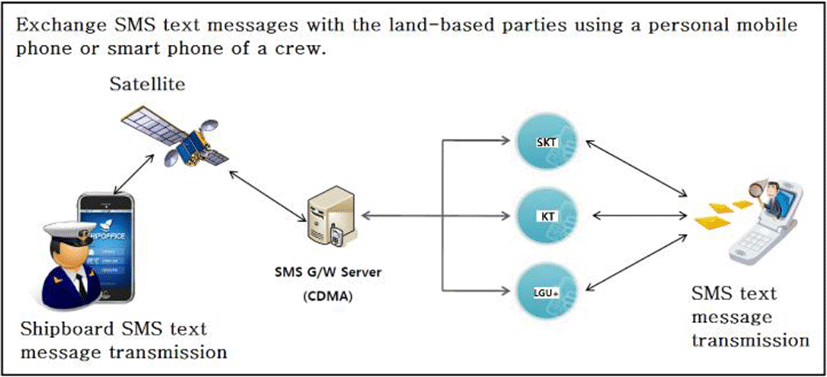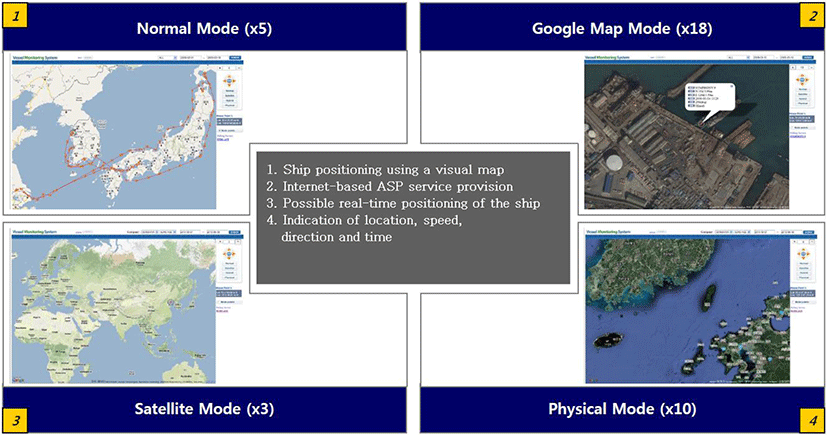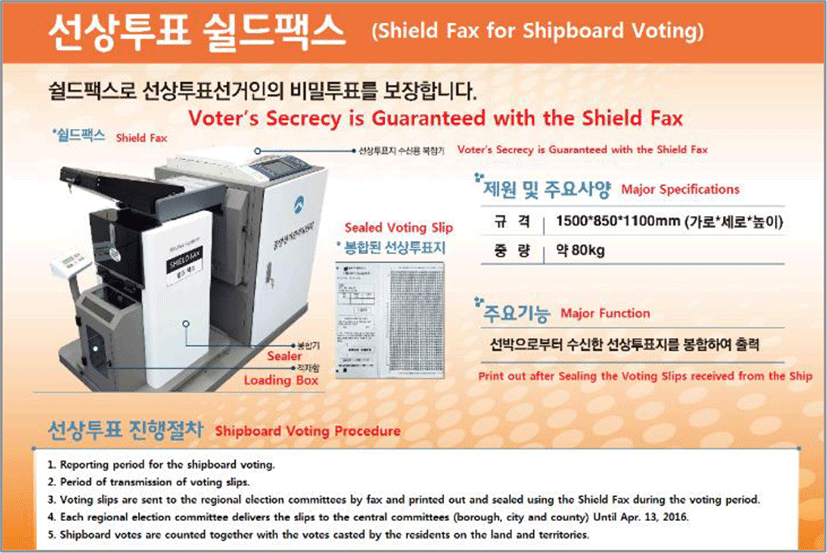I. INTRODUCTION
Living in a leading ICT-nation, the people in the Republic of Korea (ROK) are provided with uninterrupted and abundant flow of information. However, the benefits are mostly enjoyed by the people living on the land but the workers or sailors on the seagoing ships are often left out of such benefits as the modern ICT-technologies are not being fully adopted by these ships [1]. Many of seagoing ship’s crews stay on board up to a year or two depending on their contracts and during that period, they may not be able to contact others on the land or receive the newest information of what’s happening in their countries. These people include servicemen/women in the navy, coastguard, and military expeditions as well as overseas workers. The situation requires development of an efficient and modern IT-based shipboard communication system [1-4].
The current situation is that the seagoing ships are totally dependent on the satellite communications services (e.g., INMARSAT service and etc.) that offer a worldwide communication service [4-6]. While the quality of the satellite communications service provided by INMARSAT has been continuously improved upon since the introduction of the 4th-generation INMARSAT-4 satellite (2009), its service speed still remains more or less similar to the ones that have been offered in the past two decades and the communication cost is still very expensive (approx. 360 won: USD 0.30/sec). The continuous development of the IT-based communications technology has brought various means of communication methods (e.g., E-mail, SMS and etc.) but these are rarely available for the crews as the shipboard communication systems are designed or available mainly for official/business purposes. It is evident that individual crews would not be able to get sufficient outside world information in such an environment. For example, currently available communication services which can send/receive E-mails by the crews are around ten. Although these services are effective in providing up-to-date news to the crews through E-mails, their contents are rather limited and the number of broadcasting times are not enough as they are supplied in a short form and the shipping companies are concerned with the costs involved in this type of wireless communications. Moreover, many of deep-sea fishing ships operating on a long-term basis do not carry free PC(s) that can be used by their crews in their off-time as most shipping companies are consistently trying to cut down on operation costs in order to survive harsh competition.
Therefore, although there could be many problems associated with the operation cost, the burden of communication cost must be reduced to solve the problem. To do so, the problems involved in the communication costs and the development of a solution that has the high-degree of validated compression technique and reliable data transmission capability on the basis of IT technology optimized to the ships must be dealt with to enable cost-efficient data transmission and communication through current low-speed and costly satellites. Together with solution development, the measures for discovering suitable news providers, setting lower communication cost and providing/installing/servicing the adequate hardware systems must be taken. Thus, in this paper, we propose a Shipboard Secret Voting System as one of the solutions that will resolve ICT-isolated ocean crews’ problem.
II. RELATED RESEARCH
Figure 1. describes the solution based on the data compression algorithm aiming to minimize the communication costs [1]. The news transmitted from the SUNCOM’s main server are received by the news service provider and automatically displayed on a Shipboard Digital Information Display. The news data go through Data processing, LES, INMARSAT satellite, ship radio, and data processing and output processes.
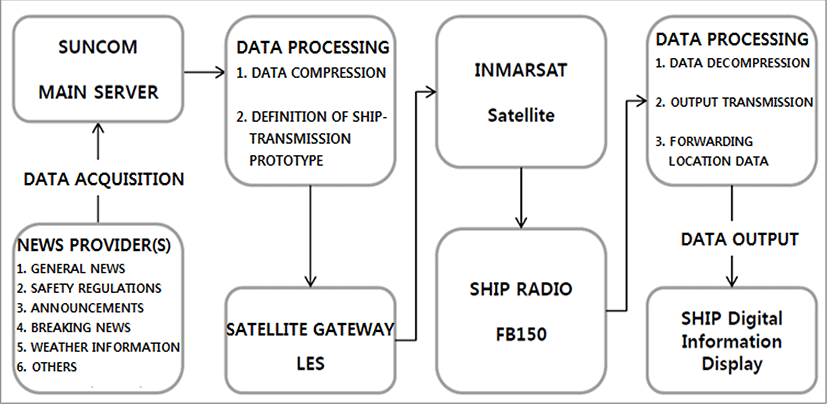
Through the Long-Range Identification and Tracking of Ships (LRIT), the relevant authorities can not only track down the locations of the ships with their own national flag but also monitor other foreign-flagged ships as well at the central control room [7-9]. This system also enables real-time transmission for typhoon warnings, expected damages, news flashes and statements released to the public. Also, English-produced domestic news is provided to the foreign crews and other DID information can be supplied to assist the ships to navigate safely.
After 9.11, the US government issued a mandatory regulation for all ships entering and leaving US ports to report their status 48 hours prior to port entry with e-NOAD system to computerize over all movements. Singapore and some EU countries are adopting similar systems but in Republic of Korea, who aims to be a most sophisticated IT-power, such institutional strategy is yet to be realized. In order to ensure the transparency of on-board secret voting, the ship’s captain could be appointed as a presiding officer and the temporary polling box can be set up at the living quarters.
III. SHIPBOARD SECRET VOTING ALGORITHM
Figure 2. describes the on-board voting algorithm proposed in this paper and the process can be divided into the six major steps.
For crews of ROK nationality, their eligibility can be confirmed by consulting the Korean Seafarers’ Union and their on-duty statuses can be checked through the Immigration Office of the Ministry of Justice.
Since ships keep the crew list themselves legally and secure crews’ embarkation/disembarkation schedules routinely, sharing of relevant databases will not be problematic. Crews can exercise their voting rights even when there are no polling stations available on the shore or when it is difficult for them to disembark from the ship. After the Election Committee collects the initial crew list across the board, they provide current candidates’ promotional materials in accordance with crews’ residential areas by checking their resident registration numbers [1].
Provision/Installation/Utilization of On-board e-voting machines: Since the satellite signals reception mechanisms vary depending on the classes and types of ships and sometimes some of them do not even have an IT infrastructure, the government supplies the voting machines. Each machine is embedded with a compact satellite terminal (FBB150), DID device, fingerprint recognition device and webcam. The machines should be used for the absentee voting but it can also be used to improve crews’ welfare on the ship by using them to provide daily and breaking news routinely.
The installation is simple as it just needs to make USB-connections so no experts are necessary. After checking the working condition of the machines by conducting the tests, the Election Committee is to check their readiness for voting procedure. In case of trouble, the committee appoints a certain maintenance company to take care of the problems (D-15 days).
After 15days of the 1st list, any changes in the list must be reported to the Election Committee to be reflected on their DB for updates, followed by posting of the instructions for voting. Under the law, the instructions related to the confidentiality of voting and the voting procedures must be consistently posted to promote participations in the voting. Meanwhile, during the election period, provision of general news will be suspended to allow the crews to concentrate on the voting.
After appointing the ship’s captain as a presiding officer for the voting, install polling station(s) on the living quarters of the ship (e.g., mess hall, office or bridge) and make sure that confidentiality will be guaranteed and adequate measures have been taken to prevent fraud.
Election fraud, including proxy voting, can be prevented by identifying the voters with a fingerprint recognition device, carrying out real-time transmissions of the resident registration number inputs, and the actions of voters to the committee with webcams. By generating the “ * “ sign on all of the e-voting slips using a keypad terminal, make sure that no one else but the voter him/herself knows whom he/she has placed a vote.
If the voting has been completed without incident, post a phrase on the displays announcing that the voting is over and prevent any re-voting attempts.
Shield Print Out: As soon as a voter selects a candidate, the Shield printer at the Election Committee outputs the result and it will be shielded and kept in an envelope.
All the voting statuses from the ships will be kept together, counted using the electronic vote counters, and transferred as images. The votes counted with the electronic vote counters will finally be printed on plain voting slips in a lump without putting them in envelopes afterwards.
IV. SHIPBOARD SECRET VOTING SYSTEM
Figure 3 is the description of the Shipboard Secret Voting System. The main objective of this system is to guard against malicious hacking attempts. For this reason, the server is prepared by the Election Committee itself and the network is a closed intranet network.
Figure 4 describes the mechanism of the Shipboard Secret Voting System proposed. The core of this mechanism is to optimize the traffic and costs by controlling the data exchange volume. As described, the information (e.g., careers, educations, political affiliations and etc.) of the candidates is displayed first followed by the verification process of a voter. Completed votes are then delivered to the appropriate supervising organization(s) using the Advanced Encryption Standard (AES). For the speedier and efficient transmission, voter’s fingerprint and screen capture data are compressed with the compression algorithm. Whereabouts of a ship participating in the election is tracked in real time and the individual voting results are stored in the database, including invalid votes.
This Figure 5 shows the process where SMS messages are being sent and received between a user on the land and a crew using crew’s personal mobile phone or smart phone. Once a SMS text message is transmitted from the ship, it will then be transmitted to the SMS G/W Server (CDMA) through a satellite(s) and finally delivered to the receiver(s) by the relevant telecommunication company. We will disclose the details in the journal as an extended article after we register the technology for a patent.
Figure 6 is a part of GUI (Graphical User Interface) of the Shipboard Secret Voting System and the method here is to check current location of the ship in real time by acquiring a bit of text message information. The process is that the ship’s location is checked with a visual map first and then the internet –based ASP service will be provided, after which a real-time positioning becomes possible followed by indication of ship’s location, speed, direction and time. We are planning to use the materials released by Google Map and satellite operation companies with their approval. The design and its implementation are described in Figure 6. The details will also be disclosed as an extended journal article after the program has been registered.
V. COMPARISON WITH OTHER SYSTEM: SHIPBOARD VOTING SYSTEM IN ROK
Introduction of the shipboard voting system in the ROK was the result of the constitutional appeal made by some of the sailors working on the seagoing ships in Aug. 2005. In this petition, they claimed that the Article 38 (absentee report) and the Article 158 (absentee ballot) of the Public Official Election Act had violated equal rights and voting rights of the sailors as these did not clearly define the procedural method for the absentee ballot on the seagoing ships. Hence, in Jun. 2006, the Korean Constitutional Court had decided that some of the clauses in these articles (Clause 3, Article 38 and Clause 4, Article 158) were unconstitutional and the relevant Acts were revised in Feb, 2012. The new shipboard voting system first started from the 18th Presidential Election in the Republic of Korea.
According to the revised voting system, sailors have to complete their absentee report prior to voting by sending a fax (identification) confirmed by the captain of their ship to the relevant authority of their place of resident registrations during the preparation period of the electoral register. The head of authority marks these sailors as the absentee shipboard voters and sends absentee ballots to the ship by fax 9 days prior to the voting date. To allow this system, the ship’s captain must have South Korean (ROK) nationality regardless of ship’s nationality. The captain decides the voting date during the period of 8 days to 4 days prior to the target date considering various navigational factors. Additionally, he/she must install a shipboard polling place where sailors can vote confidentially and send their slips by fax. On voting day, the captain verifies the identity of the voters and the validity of the voting slips together with appointed observer(s). On the other hand, the voters entering the polling booth fill in their ballots and send them to relevant branches of the National Election Commission. Finally, the voting slips are sealed in individual envelopes which will be kept by the captain for the record.
After the completion of voting, the captain has to compile a Shipboard Ballot Management Book and send it to the relevant authorities one day prior to the actual voting date on the land. The sealed envelopes and books will be submitted to the National Election Committee in each region immediately. Those coming from overseas will be accepted through valid international mails.
The ROK’s shipboard election system for the 20th election of members for the National Assembly announced by the National Election Committee (13th of Apr. 2006) was comprised of following 4 steps. Figure 7 shows the voting system used for the 20th Election of Members for the National Assembly.
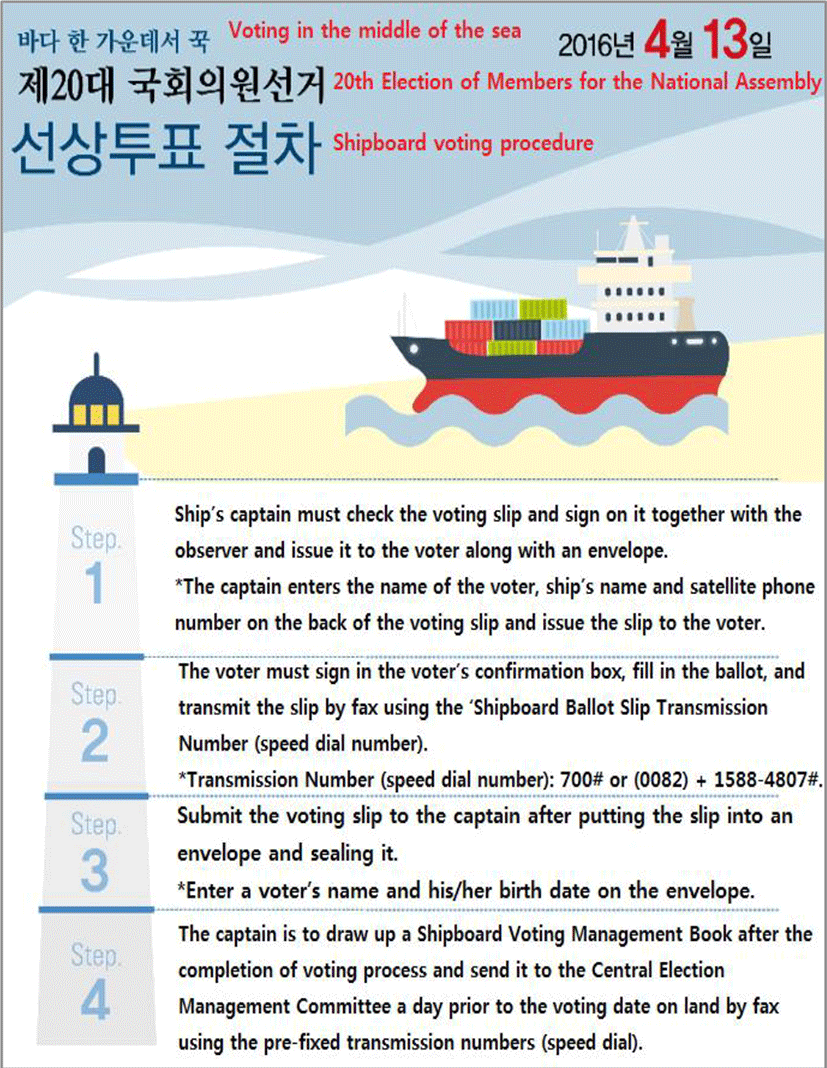
Figure 8 shows the flow of shipboard voting system used at 20th election of members for National Assembly of the ROK.
-
Transmission of voting slips.
-
Fax Server (Redundant system).
-
Reception of voting slips.
-
Vote and transmit.
-
Print out voting slips.
-
Receive shipboard voting results.
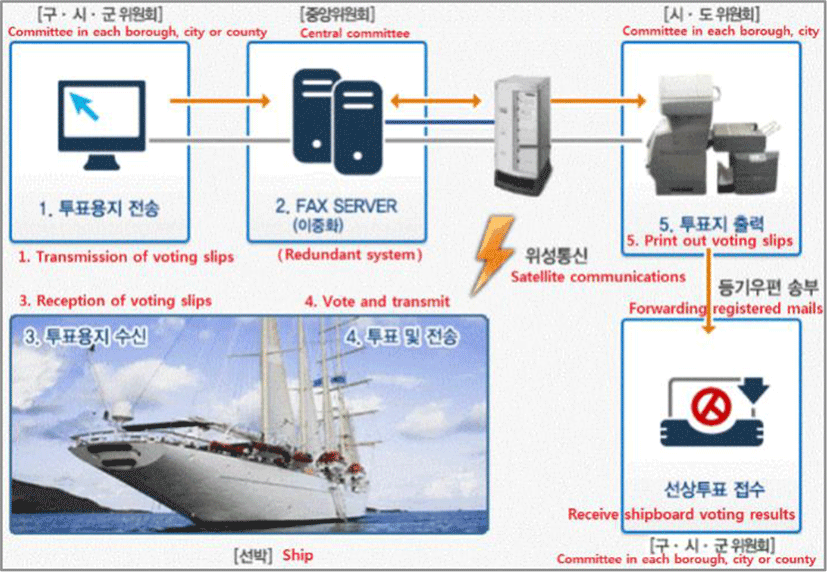
As shown in Figure 9, sailors’ are guaranteed secret voting by using a sealed voting slip and sending it by the ‘Shield Fax’.
Shipboard Voting Procedure
-
Reporting period for the shipboard voting.
-
Period of transmission of voting slips.
-
Voting slips are sent to the regional election committees by fax and printed out and sealed using the Shield Fax during the voting period.
-
Each regional election committee delivers the slips to the central committees (borough, city and county) Until Apr. 13, 2016.
-
Shipboard votes are counted together with the votes casted by the residents on the land and territories.
VI. CONCLUSION AND FUTURE WORK
This paper proposes a Shipboard Secret Voting System that can effectively process the voting procedures on the seagoing ships where their crews are inadequately informed of the information concerning the candidates and outside world due to lack of a suitable ICT technology available on their ships. The publicness, secrecy and transparency have been considered important in this system to allow sailors and workers on the ships far from their homes to exercise their voting rights. Other factors considered in the paper include communication costs and the availability of news contents to the crews through common means of communications such as E-mails, SMS, or others. The authors hope that the proposed system will improve current voting practice on the ships operating on the seas all over the world.
Encryption and execution speed improvement (optimization) for the sailors’ shipboard voting system will be studied in future work. As for the proposed system, a prototype system will be constructed and apply for a patent at the same time to improve existing shipboard voting system being serviced currently.
